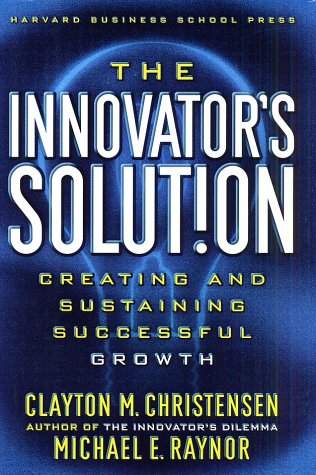 |
||
|
|
|
Originally
published on Monday, December 1, 2003
in The Miami Herald BY
RICHARD PACHTER
You can be sure that when people began sharing music online, most observers didn't think that established business structures were threatened. Or that inkjet printers would supplant laser printing. Or that the introduction of transistor radios would not only doom large radio consoles, but also become catalysts for the extinction of most appliance stores. Understanding these disruptive innovations (so called because they literally disrupt existing business structures) is the key to successful innovation and sustained growth, according to the authors of this new best-selling book. IN THEIR WORDS They write: 'How do you create products that customers want to buy - ones that become so successful they `disrupt' the market? It's not easy. Three in five new-product-development efforts are scuttled before they ever reach the market. Of the ones that do see the light of day, 40 percent never become profitable and simply disappear. Most of these failures are predictable - and avoidable. Why? Because most managers trying to come up with new products don't properly consider the circumstances in which customers find themselves when making purchasing decisions. Or as marketing expert Theodore Levitt once told his M.B.A. students at Harvard: 'People don't want to buy a quarter-inch drill. They want a quarter-inch hole.' Much of the art of marketing focuses on identifying groups or segments of customers that are similar enough that the same product or service will appeal to all of them. Managers need to segment their markets to mirror the way their customers experience life -- and not base decisions on irrelevant data that focus on customer attributes. Managers need to realize that customers, in effect, 'hire' products to do specific 'jobs.' That's one reason why retail formats like Home Depot and Lowe's have become so successful: Their stores are literally organized around jobs to be done.'' DETAILED ANALYSIS The authors also write about spin-offs and product extensions, and the need for separate, autonomous business units to manage them, and the skills needed by managers to foster and exploit the disruption. In fact, they state, failing to heed this advice is an almost certain guarantee of failure. Christensen and Raynor do a lot more than simply observe and advise; though written for laymen, their book is a heady, dense brew of research, statistics, anecdotes and charts, accompanied by lengthy and detailed footnotes. It's a lot to digest for most managers, and might itself be open to a few disruptive initiatives, since they state that low-end, down market users are the most promising initial customers. So why is there no audio version of their book? A CD-ROM or DVD would also be good media for conveying its lessons, as would a simplified (but not ''For Dummies'') repackaging of the material. The publisher needs to take the authors' advice to heart to capitalize on this book's success, lest a competitor actually implements their strategies. (Come on guys; you gotta walk it like you talk it!) STILL WORTH IT But The Innovator's Solution is an intelligent, perceptive (and frequently counter-intuitive) look at innovation, and well worth the time it takes to read and digest it to gain a greater understanding of the complex and profound combination of forces driving business development. |
|
©2004 Words on Words, All rights reserved. |
 The
Innovator's Solution: Creating and Sustaining Successful Growth.
Clayton M. Christensen and Michael E. Raynor. Harvard Business School
Press. 288 pages. $29.95
The
Innovator's Solution: Creating and Sustaining Successful Growth.
Clayton M. Christensen and Michael E. Raynor. Harvard Business School
Press. 288 pages. $29.95